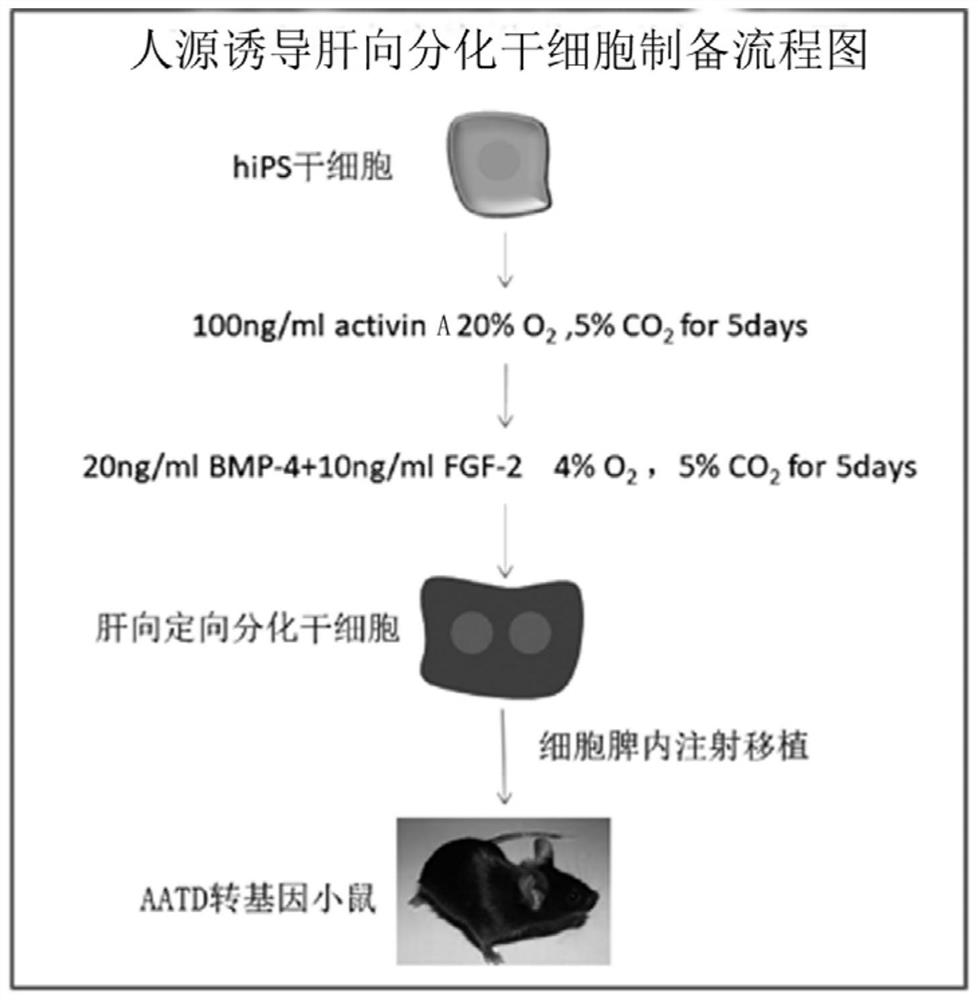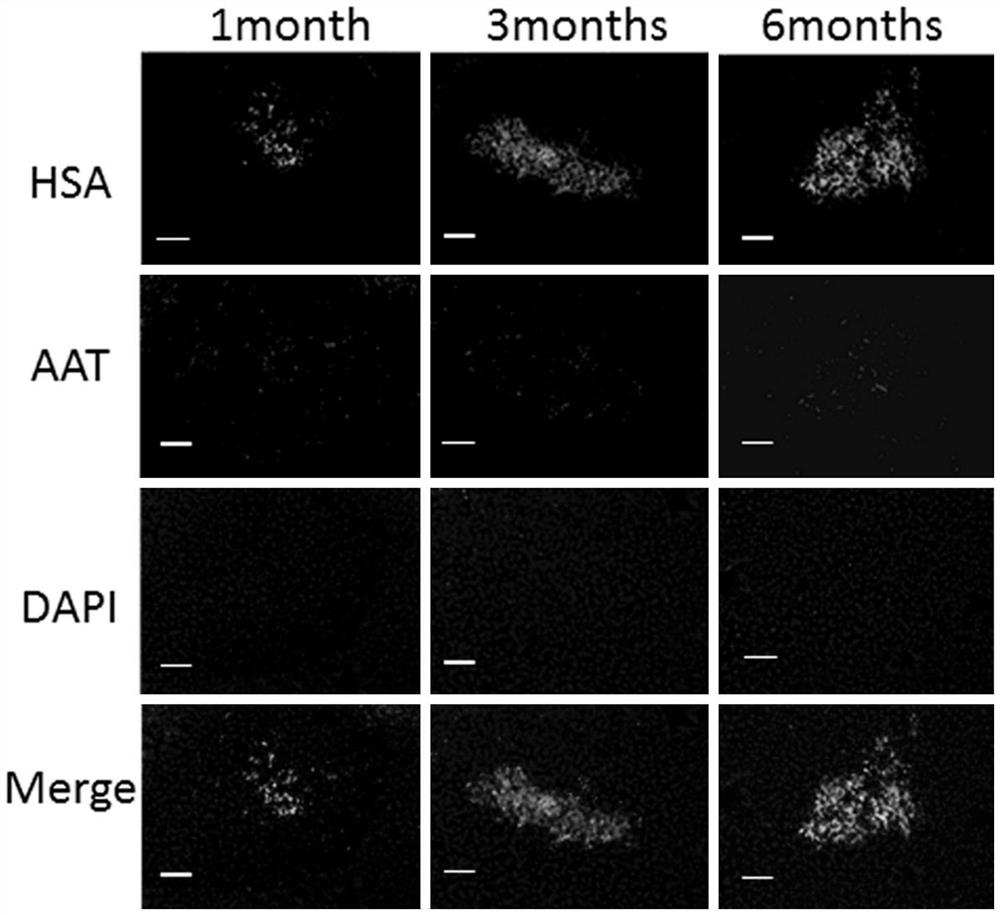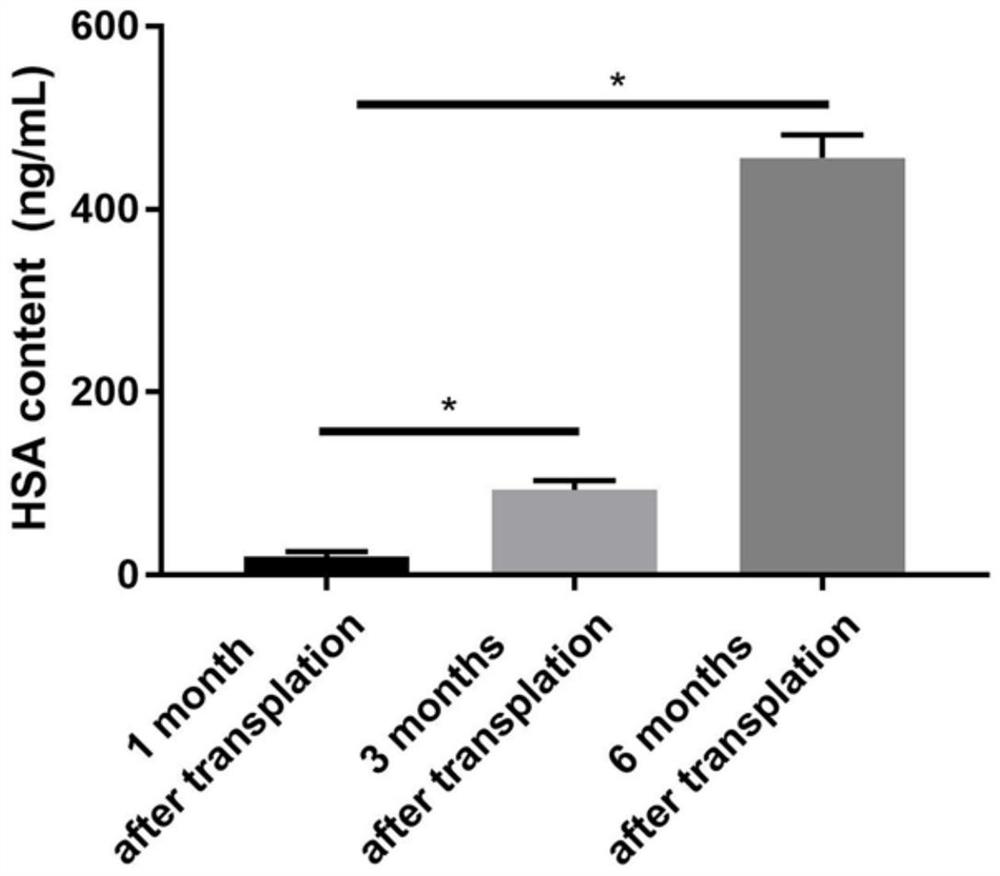Preparation method and application of human induced hepatic-specified differentiation stem cells
A technology for inducing differentiation and stem cells, applied in artificially induced pluripotent cells, biochemical equipment and methods, hepatocytes, etc., can solve the problems of weak regeneration ability, long differentiation cycle, insufficient differentiation maturity, etc., to reduce costs , the effect of reducing differentiation time, enhancing regenerative capacity and maturity
- Summary
- Abstract
- Description
- Claims
- Application Information
AI Technical Summary
Problems solved by technology
Method used
Image
Examples
Embodiment 1
[0025] Example 1. Preparation method of human-derived induced liver-differentiated stem cells
[0026] Such as figure 1 As shown, this embodiment provides a method for preparing human induced liver-differentiated stem cells, which includes the following steps:
[0027] Step 1. Stem cell culture
[0028] Coating of cell culture plate: Use a pipette to draw 6ml of basal medium (DMEM / F-12) into a 15ml falcon test tube, take out 0.25ml of matrigel (Corning, NY, USA) from the refrigerator, and put the matrigel Mix well in 0.5ml basal culture medium, dissolve and mix with the remaining basal culture medium; add 1ml mixed basal culture medium to each well of the 6-well plate, and rotate the six-well plate to make the gel evenly cover the plate on a clean bench for 1 hour. Aspirate off the gel solution and wash once with DMEM / F-12 to obtain a coated cell culture plate.
[0029] Add 1 million human iPS stem cells to 2ml mTeSR TM 1 medium, mix well. Then culture in a matrigel-coat...
Embodiment 2
[0035] Example 2. Transplantation of Human-derived Induced Liver to Differentiated Stem Cells
[0036] In this example, 35 male AATD transgenic mice (6-8 weeks old) were selected for cell transplantation experiment.
[0037] Among them, the experimental group transplanted 1 million hepatically differentiated stem cells prepared in Example 1 into the liver of transgenic mice by intramedullary injection in the spleen. Among them, AATD transgenic mice were produced with the assistance of Saiye (Suzhou) Biotechnology Company.
[0038] The blank control was injected with normal saline, and one week before transplantation, the mice were provided with drinking water containing 1 μg / g / day tacrolimus FK506 (Sigma-Aldrich, St. Louis, MO, USA) to resist rejection.
[0039] test results:
[0040] Such as figure 2 As shown, 1 month after the transplantation, human serum albumin (human serum albumin, HSA) immunofluorescent staining of transgenic mouse liver pathological sections showed 50...
PUM
 Login to View More
Login to View More Abstract
Description
Claims
Application Information
 Login to View More
Login to View More - R&D
- Intellectual Property
- Life Sciences
- Materials
- Tech Scout
- Unparalleled Data Quality
- Higher Quality Content
- 60% Fewer Hallucinations
Browse by: Latest US Patents, China's latest patents, Technical Efficacy Thesaurus, Application Domain, Technology Topic, Popular Technical Reports.
© 2025 PatSnap. All rights reserved.Legal|Privacy policy|Modern Slavery Act Transparency Statement|Sitemap|About US| Contact US: help@patsnap.com



